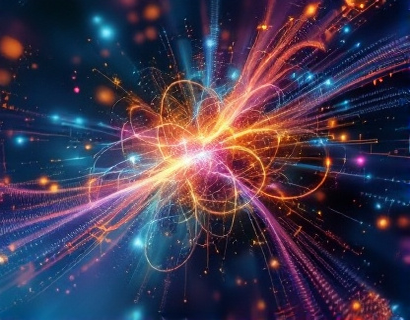Expert Guide to Advanced Geographical and Lithological Insights
In the realm of earth sciences, geography and lithology stand as foundational disciplines that offer profound insights into the structure, composition, and evolution of our planet. For professionals, students, and enthusiasts, staying abreast of the latest developments and deepening one's understanding in these fields is crucial. This guide aims to provide an advanced resource that organizes in-depth articles by category, thereby enhancing knowledge and keeping the audience informed on specialized topics.
Understanding Geography
Geography is the study of places and the relationships between people and their environments. It encompasses physical geography, which focuses on natural features and processes, and human geography, which examines the impact of human activities on the environment. Advanced geographical insights delve into topics such as geomorphology, climatology, and biogeography, each offering a unique perspective on the dynamic interactions within our planet's systems.
Geomorphology, for instance, explores the processes that shape the Earth's surface, including erosion, deposition, and tectonic activity. Understanding these processes is vital for fields such as urban planning, environmental management, and natural disaster mitigation. Climatology, another key area, studies climate patterns and changes over time, providing critical data for climate change research and policy-making. Biogeography examines the distribution of species and ecosystems across the globe, offering insights into biodiversity and conservation efforts.
Delving into Lithology
Lithology, the branch of geology that studies rocks and their characteristics, is fundamental to understanding the Earth's crust. It involves the classification, description, and interpretation of rock types, which are essential for various applications including mining, construction, and environmental assessments. Advanced lithological insights cover topics such as petrology, stratigraphy, and sedimentology, each contributing to a comprehensive understanding of rock formations and their significance.
Petrology focuses on the composition, texture, and origin of rocks, providing insights into the conditions under which they formed. This knowledge is crucial for resource exploration, as it helps identify areas rich in minerals and hydrocarbons. Stratigraphy deals with the layering of rocks and the sequence of geological events, offering a timeline of Earth's history. Sedimentology examines the processes that form sediments and sedimentary rocks, which are vital for understanding past environments and predicting future geological changes.
Integrating Geography and Lithology
The integration of geographical and lithological insights creates a holistic view of the Earth's systems. For example, understanding the geological history of a region through lithology can inform geographical studies on land use, natural hazards, and environmental sustainability. Conversely, geographical data on climate and topography can enhance lithological analyses by providing context for the formation and distribution of rock types.
This interdisciplinary approach is particularly valuable in fields such as geology, environmental science, and resource management. Professionals in these areas benefit from a deep understanding of both geography and lithology, enabling them to tackle complex problems and make informed decisions.
Resources for Enthusiasts and Students
For those new to these fields or looking to deepen their knowledge, a variety of resources are available. Online courses, textbooks, and academic journals provide a wealth of information on advanced topics in geography and lithology. Websites and platforms dedicated to these disciplines often offer specialized content, including case studies, research papers, and interactive tools.
Online communities and forums also play a crucial role in fostering learning and collaboration. Engaging with peers and experts through these platforms can provide valuable insights and networking opportunities. For students, academic advisors and mentors can guide their exploration of advanced topics, helping to shape their research interests and career paths.
Professional Development
For professionals, staying current with the latest research and advancements is essential for career growth and maintaining expertise. Attending conferences, workshops, and seminars provides opportunities to learn from leading experts and network with colleagues. Publishing research and contributing to industry journals is also a way to establish oneself as a thought leader in the field.
Continuing education and professional certifications can further enhance one's qualifications and marketability. Many organizations offer specialized courses in geography and lithology, covering topics such as GIS (Geographic Information Systems), remote sensing, and environmental impact assessment. These skills are highly sought after in various industries, from government agencies to private consulting firms.
Geoliteracy: The Importance of Public Understanding
Geoliteracy, the ability to understand and communicate about geographical and geological concepts, is increasingly important in today's world. As environmental challenges such as climate change, natural disasters, and resource depletion become more pressing, a geologically literate public is better equipped to make informed decisions and engage in meaningful discussions.
Educational initiatives that promote geoliteracy can take various forms, including public lectures, school programs, and community workshops. Media and popular science publications also play a role in demystifying complex geological concepts and making them accessible to a broader audience. By fostering a deeper understanding of the Earth's systems, geoliteracy contributes to a more sustainable and resilient society.
Conclusion
Geography and lithology are intricate and interconnected fields that offer profound insights into the Earth's past, present, and future. For professionals, students, and enthusiasts, accessing advanced resources and staying informed about the latest research is crucial for personal and professional growth. By integrating geographical and lithological knowledge, we can better address the challenges facing our planet and work towards a more sustainable future.










































